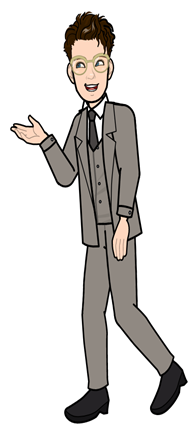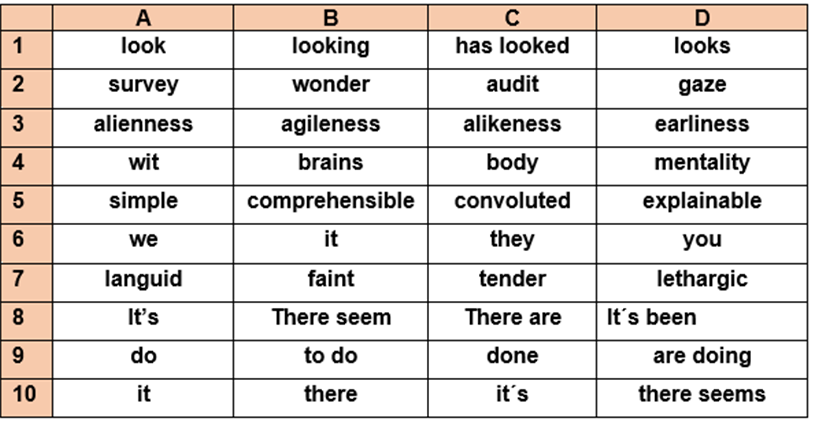I. When do we use THERE as a Preparatory Subject?

We use THERE as some kind of preparatory subject to say that something exists somewhere. We put the real subject after the verb be. For example:
- There are lots of kids in the swimming pool.
- There used to be a lovely bookstore on this street.
Can we use THERE with different tenses?
Absolutely! We can use there + be in any verb tense, in active or passive voice, and with or without modal verbs. Analyze these examples:
- There will be a party at Jason´s on Saturday.
- There has been some misunderstanding among the participants.
- There must be something wrong with this account.
- There’s going to be a huge conflict between the two countries.
Can we use other structures with THERE?
That´s right! We can use many other structures with there. For instance: there seem(s) to be, there tend(s) to be, there are (´s) sure to be, there´s (are) likely to be, there´s (are) bound to be, there used to be, or the negative form there didn´t use to be, there is no use (in doing something), there is no point (in doing something), there is no need (to do something). Here are some examples:
- There seem to be no replies to his questions.
- Unfortunately, there seems to be no possible solution for the problem.
- In real life, there tends to be preference for light colors rather than dark, among children.
- There is sure to be a great vibe at the Latino Music show, so buy your tickets now.
- There are likely to be some side effects, but the new vaccine looks promising.
- There used to be a vibrant art gallery at the end of this street.
- There didn’t use to be any night clubs in our neighborhood.
- There is no use in calling him up. He won´t answer.
- There is no point in writing an apology letter. They won´t forgive him.
- There is no need to take me home. Thank you.
- There is no use in trying to make him understand. He is simply too stubborn.
- Relax, there is no need to panic; we’ll find a way to fix the situation.
- There is no need to worry. Please take it easy. Everything’s OK.
“IT” AS PREPARATORY SUBJECT
a ) We use IT, as a preparatory subject, to talk about time, weather, temperature or distance. Here are some examples:

- It’s 7 o’clock.
- It’s finally Saturday!
- It’s hailing.
- It’s very hot today. It’s almost 38 degrees.
- It’s only a mile to the Convention Center.
b) We use “IT” to refer to something that we have already mentioned. Here are some examples:
- A: What is that?’ B: It seems like an old piece of wood. (“It” refers to “that”)
- I watched a good movie last weekend. It was my seventh movie this month. (“It” refers to “the movie”
c) We use it + be or seem as a preparatory subject before adjectives + a verb in infinitive form.
- It’s has been quite difficult to go through all the problems we have encountered.
- It seems impossible to get a good mark in Chemestry.
- It’s so nice to hear from your parents!
- It would be a pleasure to have you in my house.
d) We also use “IT” as preparatory subject when the real subject of the sentence is a clause beginning with “that”. For instance:
It’s unlikely that they will ever get along well.
It’s surprising that Ally´s parents let her go to the party.
It’s just wonderful that we can finally see each other again!.
It’s a shame that you can’t participate in the competition.
e) Lastly, we use “IT” to talk about the time we need to do something. For example:
- It takes me almost an hour to get to school every day.
- How long did it take you to complete your thesis?
II. CONSOLIDATION.
III. EXERCISE I.
IV. READING TEXT.
READING COMPREHENSION AND VOCABULARY BUILDING
Read the text below and decide which answer (A,B,C or D) best fits each gap. Use higher case letters (mayúsculas).


V. BIBLIOGRAPHY
Azar, B. S., Azar, D.A., & Koch R.S. (2009). Understanding and Using English Grammar. Longman.
Barker C. and Mitchell, L. (2004). Mega 1 (First Ed.). Macmillan Publishers.
Hewings, M. (2013) Advanced Grammar in Use with Answers: A Self-Study Reference and Practice Book for Advanced Learners of English. Cambridge University Press.
Murphy, R. (2012). English Grammar in Use. Ernst Klett Sprachen.
Murray, L. (2014) English Grammar. Cambridge University Press.
VI. WEB RESOURCES
Images_Compra propia de licencias de banco de imágenes de Pixton y Pngtree, exentas de derechos de autor. https://www-es.pixton.com/ & https://es.pngtree.com/free-backgrounds. Reading Text retrieved fromhttps://www.npr.org/sections/krulwich/2013/06/13/191286344/why-dolphins-make-us-nervous_2013 National Public Radio, Inc. News report titled "Why Dolphins Make Us Nervous" by Robert Krulwich was originally published on NPR.org on June 13, 2013, and is used with the permission of NPR. Unless otherwise noted, this content is licensed under the CC BY-NC-SA 4.0 license
VII. CREDITS
- All practice exercises and charts were written by Connie Reyes Cruz_2022_ENES- LEÓN-UNAM
- Audio version performed by Kimberly, Isabella, John and Matt_Compra propia de licencia de uso de voces en Voicemaker, exenta de derechos de autor. https://voicemaker.in/ _Connie Reyes Cruz_2022_